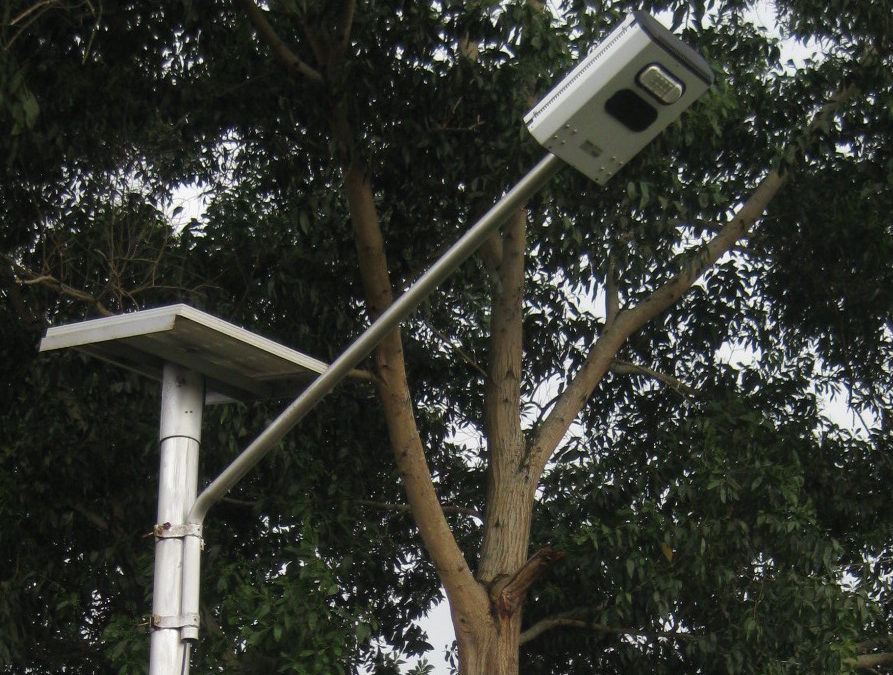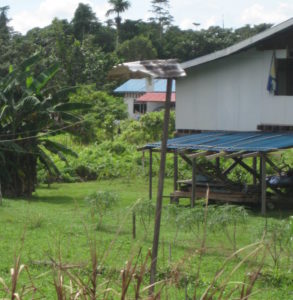Illuminating Homegrown Solutions: Streetlights in Borneo

The divide widens every day between urban and rural communities in parts of the developing world. I experienced this trend first-hand during the month I spent on the island of Borneo in Southeast Asia. I saw how this divide can be so substantial that the concepts differentiating sustainable and unsustainable can start to blur.
After 9 hours on an inter-coastal ferry and 6 hours on a river ferry I found myself in Ketapang on the remote south side of the island, staring at a solar powered LED streetlight. My inner Leslie Knope (the most hilarious public servant to grace American sitcoms) smiled at the progress of this municipality and snapped a picture (see photo). That night, after watching the evening rush of commercial goods being delivered to the ferry dock, my thoughts turned back to the solar powered streetlight. Had that fixture, and pole, and screws, and screw drivers arrived in Ketapang after 15 hours on boats from the international airport where we landed 222 miles away? They certainly weren’t made on this island; were they? How reasonable is it to expect places like Ketapang to leap frog industrialized nations into an energy transition if so many other parts of their infrastructure are in equal or greater need of innovation?
This notion distracted me again when I found myself staring at another streetlight on the Malaysian side of the island in a town called Marudi. Did I tell you I’m pretty into streetlights? I led an initiative in my home town of Asheville, NC to convert all of our streetlights to LEDs in 2012; we were the first city in the U.S. to do this.
This second fixture wasn’t nearly as elegant as the solar powered LED fixture in Ketapang. Yet it made me smile for their municipal leadership just the same. This time, also, for the ingenuity of it. You see, this light had a cover of scrap roof tin, a single CFL bulb, and a beat up plastic water bottle light shield (see photo). Many of us can understand the vulnerability of above ground power lines connected to an inconsistent grid and power source. But even with that, Marudi was able to provide a municipal service to their citizens via a quick install of readily available and reusable materials.
These two examples beg the question: Which approach is more sustainable? A homemade streetlight with reusable materials you can find in country or a solar powered LED streetlight manufactured abroad? When facing puzzles of this sort, I start by asking, “What problem is that city trying to solve?” We don’t always acknowledge that answering questions about sustainable energy, and ultimately climate change, isn’t about the right answer, it’s first about the right question. We have to understand that needs on the ground, especially in developing countries, are rarely only focused on CO2 reduction. Sometimes they are just about a little bit of light.
If you want to invest in a life after carbon, I encourage you to understand what the problem feels like on the ground, then ask yet another question, “How can I support the problem solvers in these cities?” After all, it will be their knowledge of their problem that will guide their solutions. It’s these homegrown solutions in cities at home and abroad that should disrupt current practices, policies, and technology for a carbon-free future.
Maggie Ullman is a contributing author to Investing Strategically in Social Impact Networks, the companion guide to Connecting to Change the World. She leads Ullman Consulting (www.UllmanConsulting.net) which specializes in helping philanthropy invest in climate change at the local level. They work with foundations and their grantees to translate theory of change into action. Maggie lives in Asheville, NC and day dreams of orangutans in Borneo.


